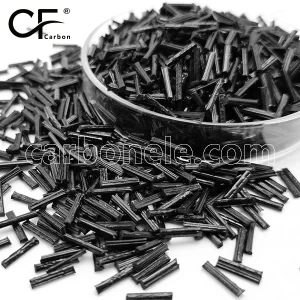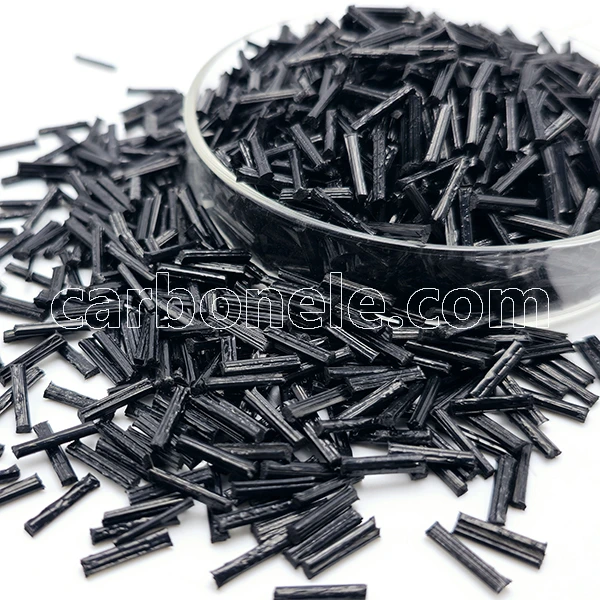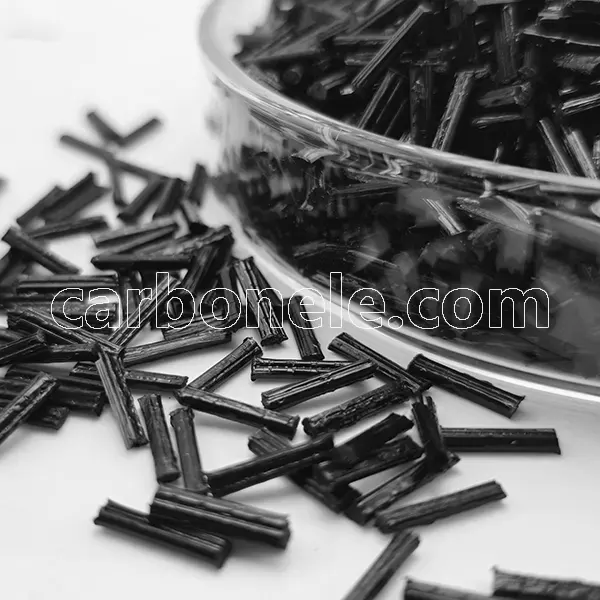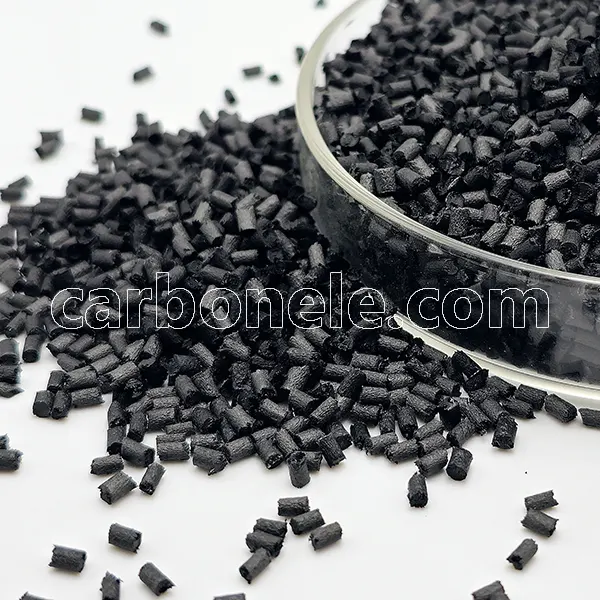What Are The Benefits Of Carbon Fiber Modified Polypropylene (PP CF)? - Carbon Fiber Compounds Manufacturer | Supplier
Carbon Fiber Reinforced Polypropylene (PP): Enhanced Performance and Applications
The incorporation of carbon fibers into polypropylene (PP) significantly improves the material’s overall performance while retaining its inherent advantages, such as lightweight properties, chemical resistance, and ease of processing, while compensating for its mechanical shortcomings.
1. Significant Improvement in Mechanical Properties
-
High Strength and Modulus
-
Carbon fibers substantially enhance PP’s tensile strength, flexural strength, and rigidity (modulus). For example:
-
Unmodified PP has a tensile strength of ~30–40 MPa, which increases to 80–120 MPa with 20–30% carbon fiber addition.
-
Flexural modulus rises from 1.5 GPa to 5–8 GPa, approaching the performance of engineering plastics (e.g., nylon, PBT).
-
-
-
Creep Resistance
-
Carbon fibers effectively reduce long-term deformation under load, making them suitable for dimensionally stable components (e.g., automotive structural parts).
-
-
Impact Resistance
-
Short carbon fiber-reinforced PP may exhibit slightly reduced impact strength, but compatibilizers (e.g., maleic anhydride-grafted PP) can improve fiber-matrix adhesion, minimizing brittleness.
-
2. Enhanced Thermal Properties
-
Higher Heat Deflection Temperature (HDT)
-
Pure PP has an HDT of ~60–80°C (at 0.45 MPa load), which increases to 120–150°C with 20% carbon fiber, enabling use in high-temperature environments (e.g., engine components).
-
-
Reduced Thermal Expansion
-
Carbon fibers minimize thermal shrinkage, preventing dimensional deviations in precision parts.
-
3. Improved Electrical Conductivity & EMI Shielding
-
Antistatic/Conductive Properties
-
Carbon fibers form a conductive network, reducing surface resistivity from >10¹⁶ Ω/sq to 10³–10⁶ Ω/sq, preventing static buildup (e.g., electronics housings, mining equipment).
-
-
EMI Shielding
-
At ≥15% carbon fiber content, PP achieves 30–60 dB EMI shielding, ideal for 5G devices and medical equipment.
-
4. Lightweighting & Cost Efficiency
-
Low Density
-
Carbon fiber (1.7–1.8 g/cm³) is lighter than glass fiber (2.5 g/cm³), keeping modified PP at 1.0–1.2 g/cm³—50–70% lighter than metals.
-
-
Metal/Engineering Plastic Replacement
-
Used in automotive and aerospace to replace aluminum or nylon, offering weight savings at lower costs than continuous carbon fiber composites.
-
5. Processing Advantages
-
Retains PP’s Processability
-
Short carbon fiber-reinforced PP remains compatible with injection molding and extrusion, suitable for complex geometries (e.g., gears, connectors).
-
-
Faster Cycle Times
-
Carbon fibers’ high thermal conductivity accelerates cooling, improving production efficiency.
-
6. Chemical & Wear Resistance
-
Corrosion Resistance
-
Carbon fibers are non-corrosive, making PP more stable than metals in acidic/alkaline/saline environments (e.g., chemical piping, valves).
-
-
Wear Resistance
-
Carbon fibers reduce friction, extending component lifespan (e.g., bearings, sliders).
-
Key Applications
-
Automotive: Dashboard supports, door frames, battery housings (lightweight + high strength).
-
Electronics: Laptop casings, drone frames (conductivity + EMI shielding).
-
Industrial: Pump housings, conveyor rollers (wear + chemical resistance).
-
Consumer Goods: Sports equipment (skis, helmets), furniture parts (high rigidity).
Considerations
-
Interfacial Compatibility: Coupling agents (e.g., silanes or maleic anhydride-grafted PP) enhance fiber-matrix bonding.
-
Fiber Orientation: Injection molding may induce anisotropy; mold design optimization is critical.
-
Cost Control: Carbon fiber is expensive; typical loadings (10–30%) balance performance and cost.
Carbon fiber-reinforced PP emerges as a high-performance material combining lightweighting, strength, thermal stability, and functionality, making it ideal for replacing metals or engineering plastics in automotive, electronics, and industrial applications—offering a cost-effective upgrade solution.
Previous News
Short vs. Long Carbon Fiber in Thermoplastics: ...Next News
What’re the Differences Between PA66 CF30...
Feature Product
-
PA12 LCF30 for Drone Fuselages & Wings
What do you know about PA12 LCF30? PA12 ...
-
Competitive Price PA6 LCF30 Composites
What’s it? PA6 LCF30, which stands...
-
ABS CF10 Compound ABS 10%CF Thermoplastic Compo...
What’s ABS CF10? ABS CF10 refers t...









